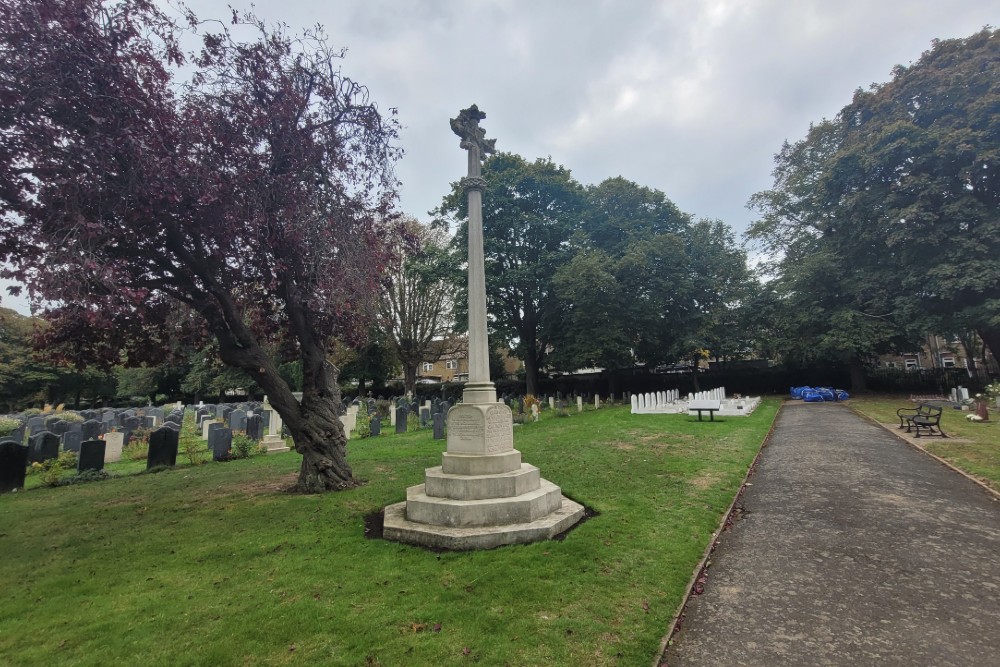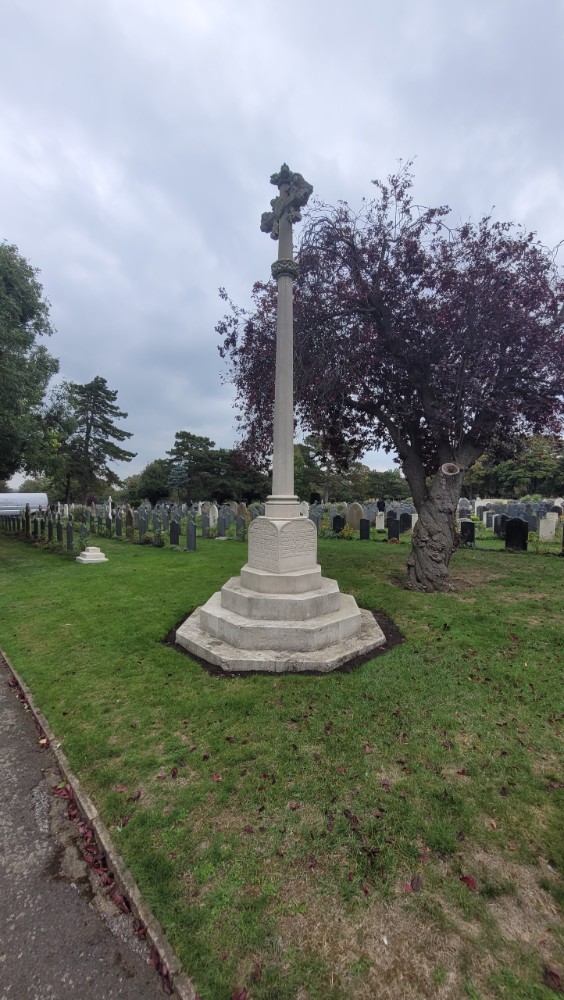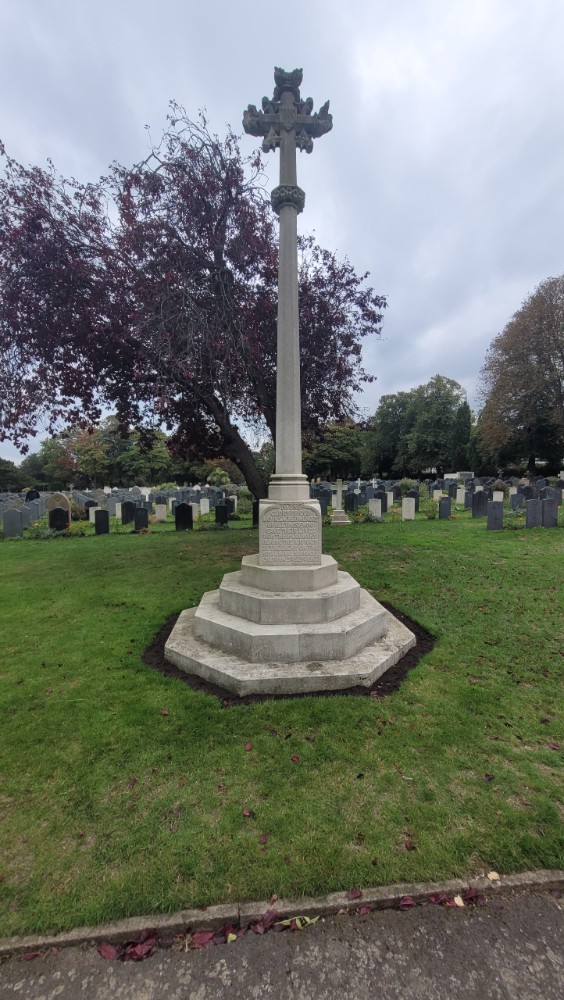Memorial Chatham 'Drill Shed' Air Raid 3 September 1917
This memorial, on Woodlands Road Cemetery, commemorates the about 130 people who were killed at the Royal Naval Barracks in an German air raid, on 3 September 1917.
On 3 September 1917, the Chatham Drill Hall, then a glass roofed building, was being used as a temporary overflow dormitory for sailors and there were 698 men asleep or resting in their hammocks in the Drill Hall. The Drill Hall formed part of the Royal Navy’s HMS Pembroke barracks at Chatham.
The Drill Hall at HMS Pembroke in Chatham was completed by 1902 and, as its name suggests, was constructed to provide an indoor space in which the exercise and training of navy personnel could be undertaken during inclement weather. Often referred to as the ‘Drill Shed’ it was also used variously as an overflow barracks, exhibition centre, naval store (for rum, clothing and general supplies) and building materials warehouse. The drill shed is about 250 yards long and 25 yards wide; solid brick walls, with offices along one side… It has a glass roof, quarter of an inch thick.
In September 1917 the problem of housing the men at HMS Pembroke had been further exacerbated by two unanticipated events: firstly, the men who had been earmarked to join the battleship HMS Vanguard had been forced to remain at the barracks, after she had been sunk at Scapa Flow in July 1917. Secondly, an outbreak of 'spotted fever' (epidemic cerebro-spinal meningitis) in the barracks meant that the sleeping accommodation had to be increased in an effort to avoid further infection.
At 9.30 p.m., five Gotha G.V. Bombers left Belgium. Since the greatest loss of the bombers was during the daylight raids, the decision was made to carry out a night-time attack – this would be one of the first of the First World War 'moonlight raids'.
One of the bombers encountered engine problems and had to return to their airbase but the remaining four carried on and passed over the Isle of Sheppey at around 11.00 p.m. where they followed the River Medway towards Chatham. As this was the first night-time raid, the Medway Towns were unprepared and the whole of Chatham was illuminated with none of the anti aircraft guns prepared for attacks.
The Drill Hall suffered a direct hit. The bomb shattered the glass roof, sending dangerous shards of glass flying through the drill hall before exploding when they hit the floor. The clock on the drill hall tower stopped at 11.12, giving the exact time the bomb exploded. The men asleep or resting inside had little chance of survival, those that were not injured from the explosion were cut to pieces by the falling pieces of glass from the roof.
Rescuers subsequently spent 17 hours looking through the rubble. By the end of the raid the total number of dead stood at 98, but this would increase as injured men later succumbed to their injuries.
Do you have more information about this location? Inform us!
Source
- Text: Fedor de Vries/Western Front Association
- Photos: Anthony (Sharky) Ward
Nearby
Museum
- Royal Engineers Museum and Library - Gillingham
- Fort Amherst - Gillingham
- Historic Dockyard Chatham - Chatham
Point of interest
- Air-Raid Shelter Brompton - Brompton
- Air-Raid Shelter Restoration House - Rochester
- Soviet Foxtrot Class Submarine - Rochester
Monument
- Memorial HMS Glatton - Gillingham
- Memorial HMS Bulwark and HMS Princess Irene - Gillingham
- Remembrance Tree Cpl Andrew George McIlvenny RE - Gillingham
Cemetery
- Dutch War Graves Woodland Cemetery Gillingham - Gillingham
- Commonwealth War Graves Woodlands Cemetery - Gillingham
- Graves of VC Recipients Gillingham - Gillingham






